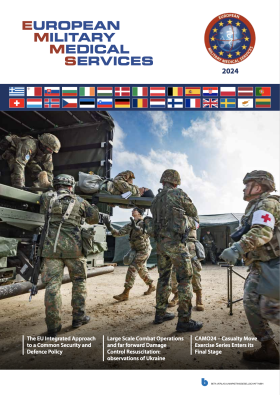
Report: K. POLLO, H. BRAHO, L. NIKOLLARI (HUNGARY)
Penetrating Neck Injury
Tracheal injuries are seen in approximately 1%–7% of patients with penetrating neck injuries. Although they are rare, a high suspicion should be maintained because of the potential for life-threatening airway compromise. This case report aims to emphasize this claim.
Greater urban violence has resulted in an increased incidence of penetrating neck trauma. Penetrating neck wounds can present difficult diagnostic and therapeutic dilemmas. The evaluation and management of such injuries, however, remains controversial. Factors contributing to these problems are complex anatomy, proximity of vital structures, and potential for rapid deterioration of airway, vascular, or neurologic injuries. Other contributing factors are the lack of consensus in the literature regarding appropriate evaluation and management of penetrating neck injuries, and insufficient resources or experienced personnel at some institutions.
Case description:

A 16-year-old male was presented to the emergency unit of the Military Central Hospital in Tirana, Albania with a penetrating neck wound. He reported stridor, tachypnoea, subcutaneous emphysema, no active bleeding, significant crepitations in the anterior region of the neck and superior thoracic region. Physical examination was remarkable for the wound in the left anterior region of the neck, the subcutaneous emphysema on the right part of the neck and the right armpit, the light oedema in the right part of the neck. The wound was 3-4 cm long and sutured. He was conscious; cardiovascular, respiratory and renal systems were normal. Laboratory findings were normal. Radiologic findings consisted of the CT reports, which confirmed the perforation of the trachea, pneumomediastinum, pneumothorax, and subcutaneous emphysema. He was admitted with a diagnosis of penetrating neck wound and injury of the trachea. Medical management consisted of intravenous antibiotics, analgesics and bed rest. During hospital stay, the patient’s condition improved. He was discharged on day eight.
Imaging
Radiologic findings consisted of the Rx and CT reports, which confirmed
- Perforation of the trachea
- Pneumomediastinum
- Left -sided Pneumothorax
- Right-sided Subcutaneous Emphysema
Discussion:
This case illustrates that an equal willingness for both conservative and surgical intervention as dictated by serial bedside evaluation with adequate radiological support can provide the clinician a safe and effective means of managing a potentially complex and lethal problem.
Conclusions:
Tracheal injuries are seen in approximately 1%–7% of patients with penetrating neck injuries. Although they are rare, a high suspicion should be maintained because of the potential for life-threatening airway compromise. Imaging often allows direct identification of a penetrating injury to the trachea and help plan definitive treatment. CT is a rapid, non-invasive technique for visualizing the structures of the trachea. It can be used as an important adjunct to clinical examination in determining the most optimal therapy to reduce as much as possible any posttraumatic complications.
References: [email protected]
Authors:
Kledia Pollo, MD, MBA, MPH
Specialist at Department of Otorhinolaryngology (ENT),
Trauma University & Military Hospital
Date: 12/24/2018
Source: Medical Corps International Forum (2/2015)










